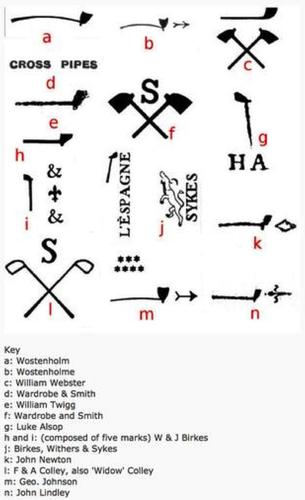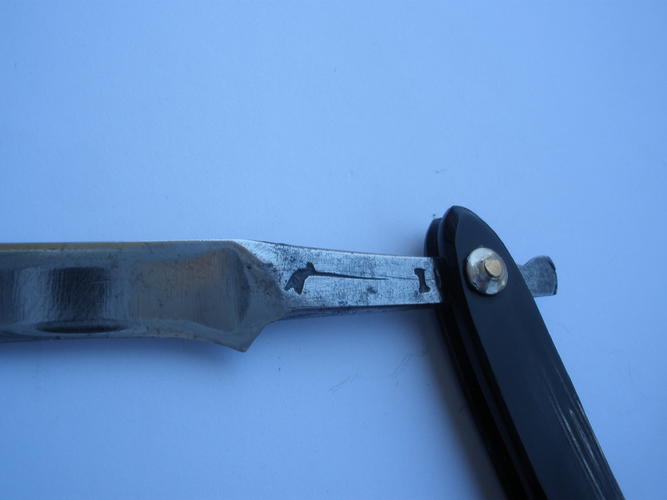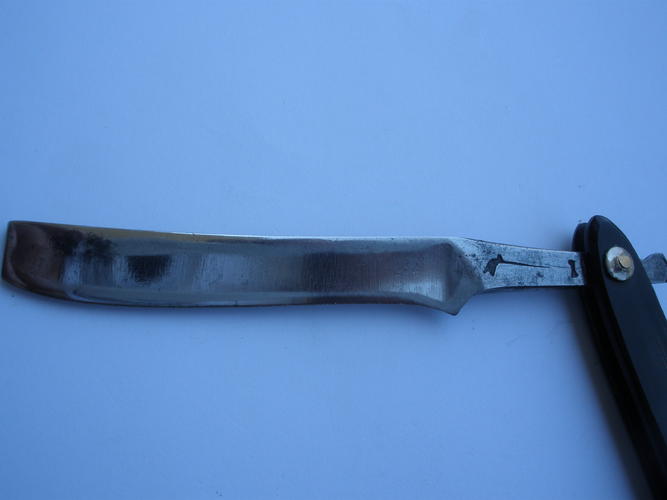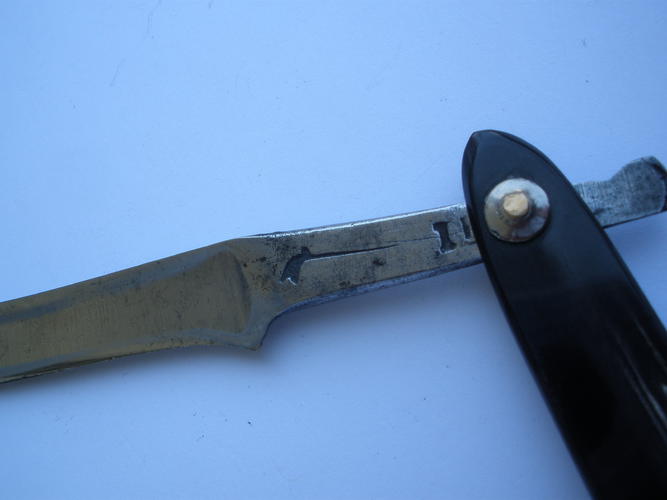Results 1 to 10 of 15
Thread: Need help with age and maker.
Hybrid View
-
07-26-2014, 03:58 PM #1

The company also acquired the Pipe trademark from William Hutchinson in 1843 (which was granted at 22nd Dec., 1694 and Wostenholm described as the oldest mark on the Company of Cutlers' register
So I would think this to be a William Hutchinson razor.SRP. Where the Wits aren't always as sharp as the Razors
http://straightrazorplace.com/shaving-straight-razor/111719-i-hate-you-all.html
-
07-26-2014, 04:23 PM #2Senior Member



- Join Date
- Mar 2012
- Location
- Thunder Bay, Ontario, Canada
- Posts
- 17,251
Thanked: 3222
-
07-26-2014, 06:03 PM #3Senior Member



- Join Date
- Apr 2008
- Location
- Essex, UK
- Posts
- 3,816
Thanked: 3164
It is not as simple a case as it looks. What do the Wostenholm pipes have in common? Answer - a curved stem. There are only three things to look for - the shape of the bowl, whether the bowl has a foot or not, and whether the stem is curved or straight.
Here is a list of pipe marks I compiled several years ago, but which keep getting trotted out:

You can decide for yourselves!
Lastly, it is not a full wedge, but a 'near-wedge'. full wedge means absolutely straight sides, no concaving, not even the hint of any. You find this on certain razor grinds (rattlers, for instance) where the grind wheel has been used on its side for the lower half of the razor. Any other razor ground on a wheel cannot possibly have a straight side- it must have a degree of curvature, so there are not any wedge razors (in the true, accepted sense of the word) produced by grinding at a 90 degree angle to the wheel. However, you do find that sandstone wheels of 2 ft and more in diameter were once used - that gives a barely perceptible hollow, but you can ascertain it, even in the pic posted here, as there is a small crest on the spine.
Regards,
Neil
-
-
07-26-2014, 06:27 PM #4Senior Member



- Join Date
- Mar 2012
- Location
- Thunder Bay, Ontario, Canada
- Posts
- 17,251
Thanked: 3222
I was afraid it was not going to be that simple or easy. Thanks for trotting that info out again Neil.
BobLife is a terminal illness in the end
-
07-26-2014, 06:31 PM #5

Last edited by ajkenne; 07-26-2014 at 10:06 PM.
-
07-26-2014, 08:52 PM #6Junior Member

- Join Date
- Jul 2014
- Posts
- 5
Thanked: 0
Thank you all for your swift and knowledgeable replies! I live in Sweden and picked up the razor at a local charity shop. When I first saw it i thought it was "homemade", it looks crude especially with the wood handle.
But when i saw the pipe, that looked like a tomahawk to me i thought that it might be tracable. I cant say that I can match it to any of the smiths that Neil so kindly suplied, but knowing roughly when its made and that its most likely of english make is good enough for me.
Again, many thanks!
-
08-18-2014, 05:46 PM #7Junior Member

- Join Date
- Jul 2014
- Posts
- 5
Thanked: 0
I am bumping my own thread because I once again need to ask for your opinion. I came upon a razor very similar to the one i started the thread about. I took pictuers of the new razor next to the old one. This one also has a pipe, but also an arrow. Matching it to a maker how ever is not a simple thing but I assume that it is of English make. To my novice eyes it looks very similar to the old one, its larger and the tail is different. Would it be correct to assume the its late 1700s?
Also adding a picture of another razor i came upon, its marked Clark Hall, and from what Ive read he made razors about 1797-1823. From your experience is it closer to 1800 or 1820? I know that these things are hard to date exactly, but I would greatly apreciate any insight that you might have.
-
08-18-2014, 06:09 PM #8Senior Member



- Join Date
- Apr 2008
- Location
- Essex, UK
- Posts
- 3,816
Thanked: 3164
In 1797 Clark & Hall, fine razorsmiths, were listed as being at Sheffield Moor in Robinson's Directory listing for that year. Early razors were usually marked 'cast steel' and later 'warranted'. Partners were (probably - not totally verified) James Hall and Marmaduke Clark or relatives of theirs.
The names, especially the link between the two, seems quite common in Sheffield of that era. We also have a Clark, Hall & Clark giving way to Clark & Osborne.
You have a very narrow time window of 26 years - I doubt that you will narrow it any further!
Your other razor, with the arrow and pipe, looks like a George Johnson to me. It's on the list.
Regards,
Neil
-
The Following User Says Thank You to Neil Miller For This Useful Post:
Drabant (08-19-2014)
-
08-18-2014, 06:15 PM #9

NEIL, NEIL, HE'S OUR MAN IF HE CAN'T TELL YOU... then you might as well send those razors to me for disposal.
 SRP. Where the Wits aren't always as sharp as the Razors
SRP. Where the Wits aren't always as sharp as the Razors
http://straightrazorplace.com/shaving-straight-razor/111719-i-hate-you-all.html


 12Likes
12Likes LinkBack URL
LinkBack URL About LinkBacks
About LinkBacks






 Reply With Quote
Reply With Quote




